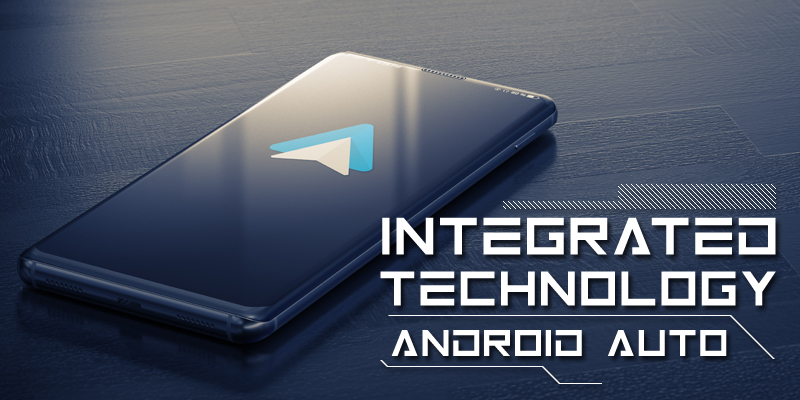
Smartphones are awesome! We carry the power of limitless communication in our pockets these days, but with great power comes great responsibility. Nearly 25% of automotive accidents involve someone using a phone while driving. There are times when, for the safety of ourselves and others, we simply can't use our mobile devices. Well, at least there were times like that up until relatively recently. As phones and vehicles become smarter, their ability to communicate with each other becomes greater and greater. Enter apps like Apple CarPlay and Google Android Auto that introduce a seamless transition to on-the-go mobile device usage to keep your hands on the wheel and your eyes on the road.
In this blog, we'll be focusing on Android Auto. Developed by Google for Android smartphones, Android Auto is designed to mirror some features of your mobile device on the infotainment screen of Android Auto-enabled vehicles. These are typically features drivers need to be able to access without having to risk looking at their phone while driving, such as music, navigation, and telephonic functions. Here's a quick guide to how to easily use this awesome feature.
The App
The Android Auto app connects your phone to your vehicle, allowing you to control and view phone information on your vehicle's infotainment screen to reduce distractions. Large, clear icons and easy swipe gestures control this system. It's a fantastic way to stay safe while driving while also maintaining your productivity. Using Auto entails a bit of a learning curve, but it becomes seamless and natural once you're familiar with the functions.
Linking the App and Your Vehicle
Connecting Android Auto is easy. Connect your smartphone via USB (or Bluetooth, for vehicles that support Android Auto wirelessly). Your vehicle should include instructions for setting up Android Auto the first time, but some newer cars run through the process automatically without your involvement.
The Features
The primary Android Auto features are:
Navigation. Probably the most useful feature is the ability to use many different navigation apps on your vehicle. Even if your vehicle has no native navigation feature, you'll be able to use Google Maps or Waze for turn-by-turn navigation right from your infotainment touchscreen.
Music. Many of the most popular music-streaming apps are supported on Android Auto, plus access to music stored on your phone.
Calling. Besides navigation, the other obvious feature is hands free telephony services. With access to your contacts and voice recognition, making or taking a phone call without ever looking at your phone is simple.
Messaging. Apps such as WhatsApp and Hangouts are supported, and messaging is easy with voice commands and text-to-speech dictation. Notifications for messages are also available via your vehicle's infotainment system.
Google Assistant. Use voice commands and text-to-speech to search the web while keeping your focus on the road. Check restaurant hours, tell Android to start navigation, or control other phone functions. Every Android Auto function can be used with voice commands, making it truly hands-free!
Does My Vehicle Support Android Auto?
Hyundai was the first automaker to offer Android Auto support in select vehicles, and many makers have followed suit over the years. Many vehicles from many manufacturers offer support for Android Auto today. Sometimes, base models are left off the list, but it's a feature that can be added later. We may soon see it as a standard feature across all vehicles with even basic infotainment screens.
Interacting with you phone while driving has never been easier or safer. As more manufacturers add these features to their lineups, we may hopefully see a big drop in distraction-related accidents. Even if your vehicle does not support Android Auto, you can still download the app and use its functions with your phone in a purpose-made mount to mimic the functionality of in-dash touchscreens.